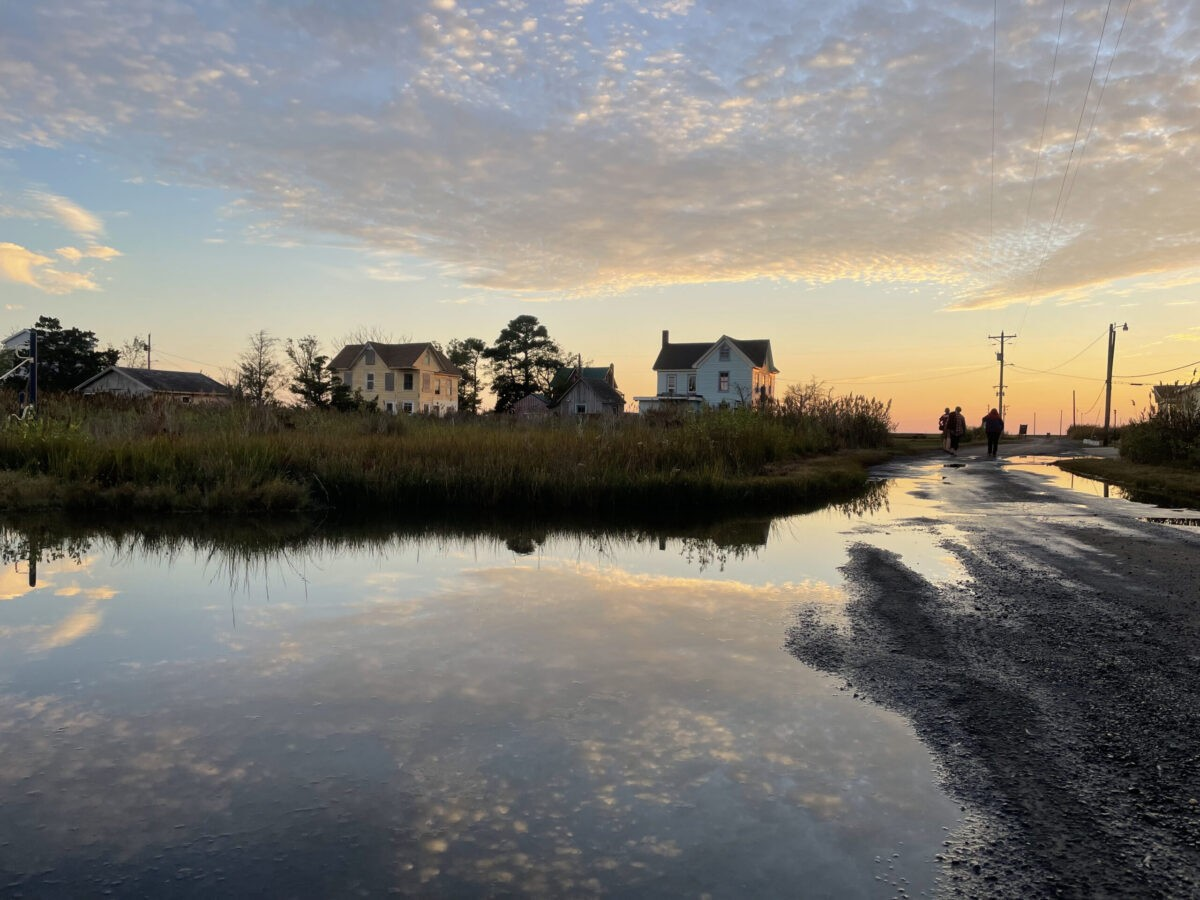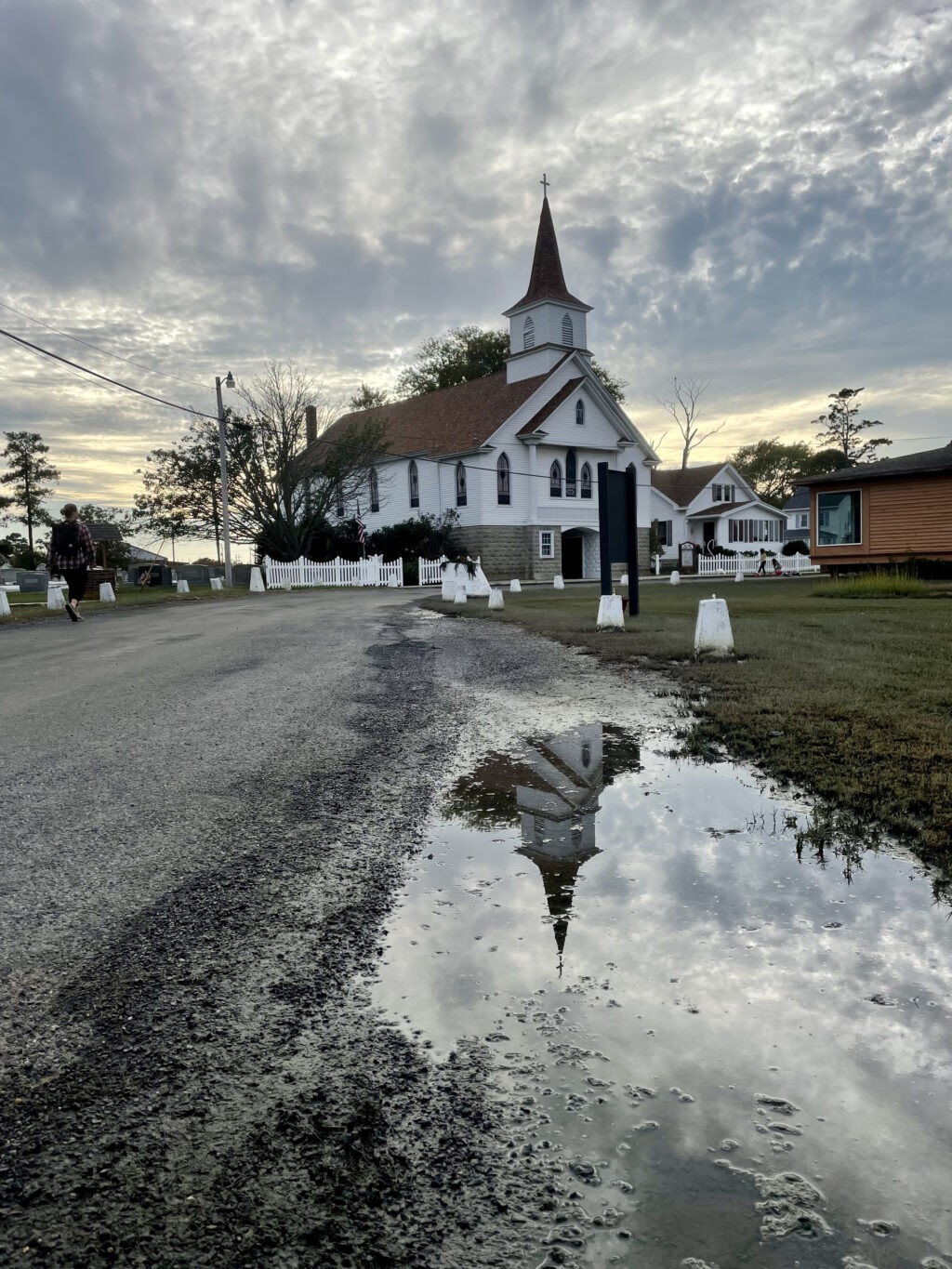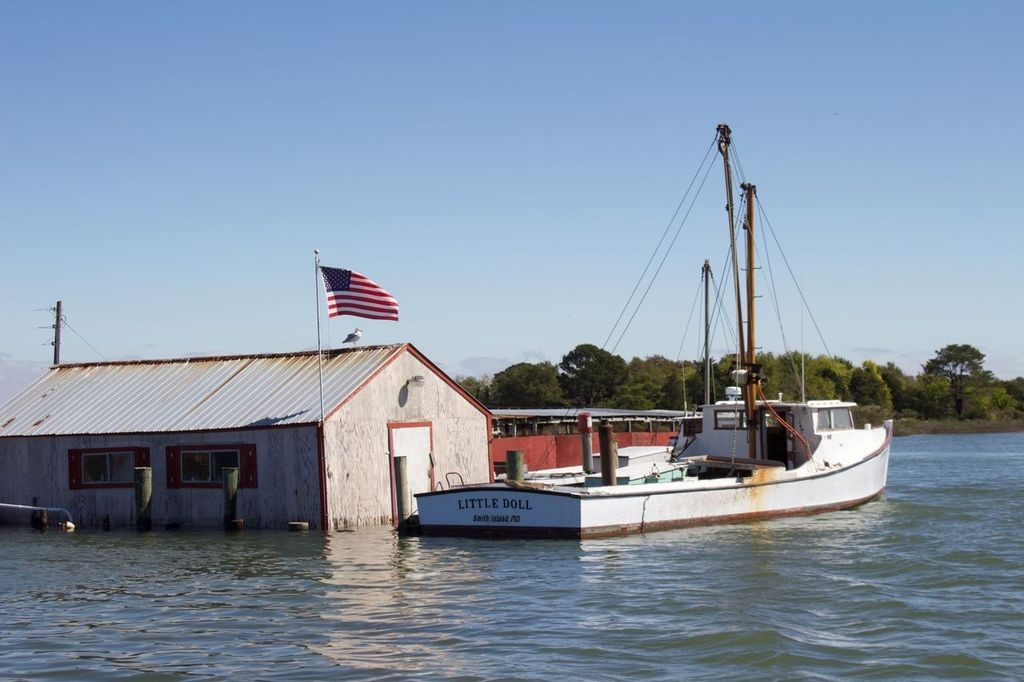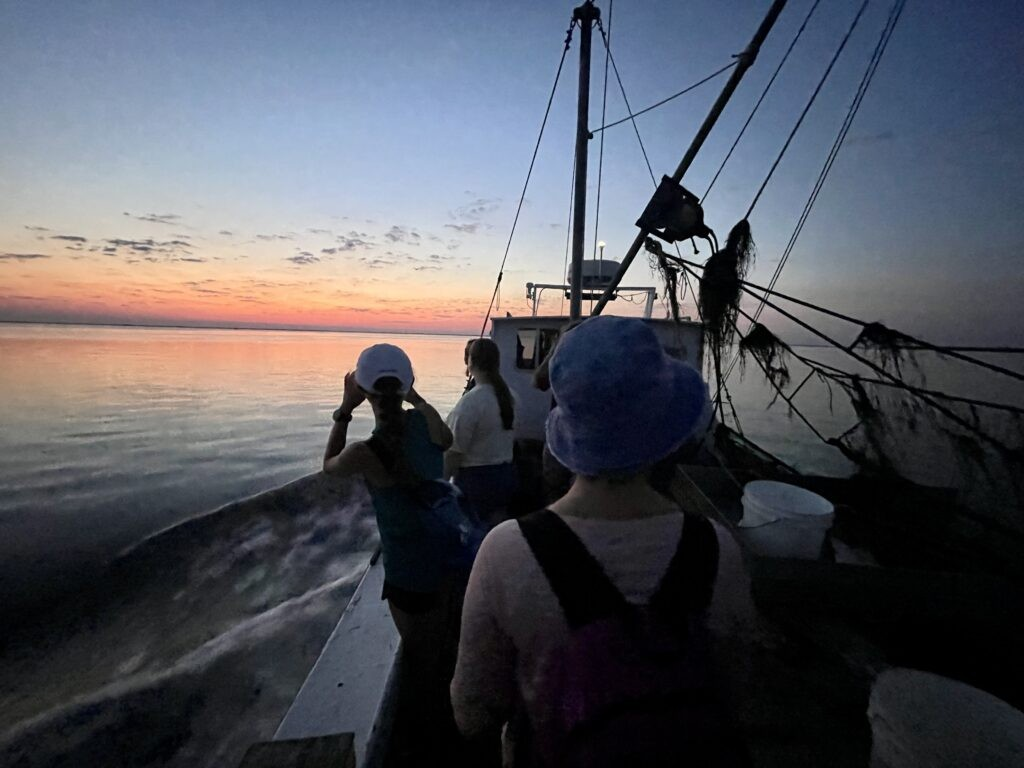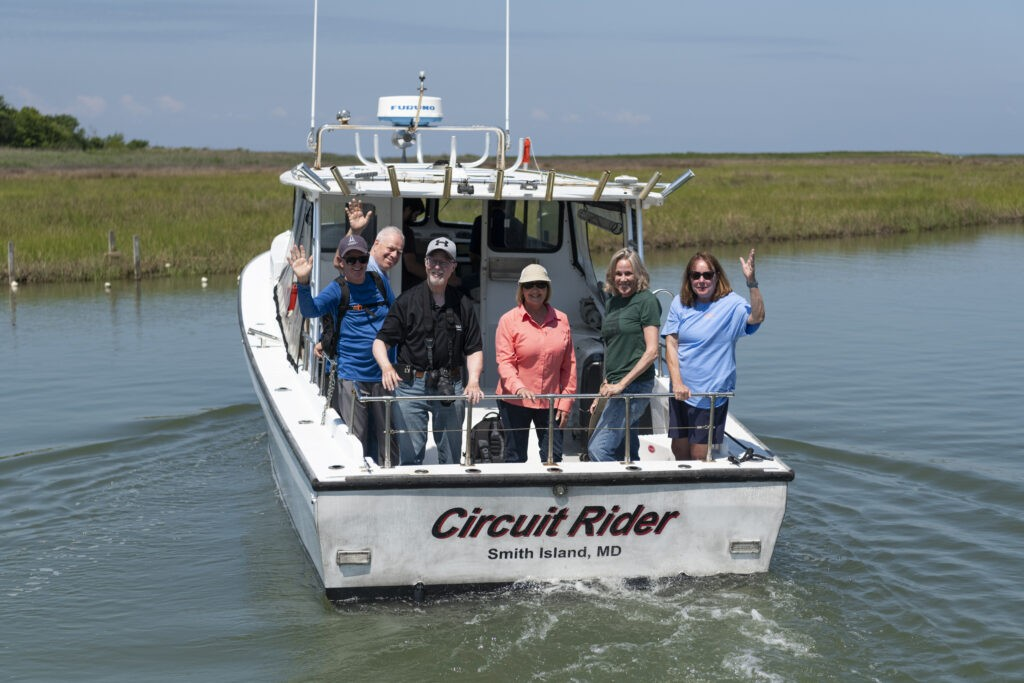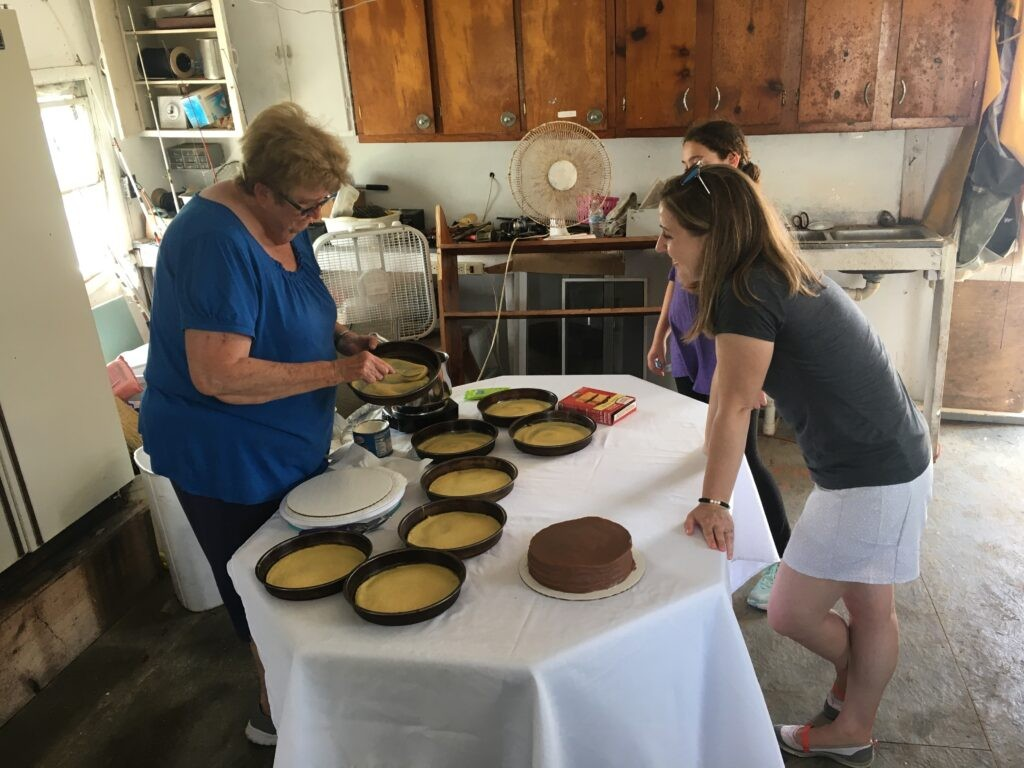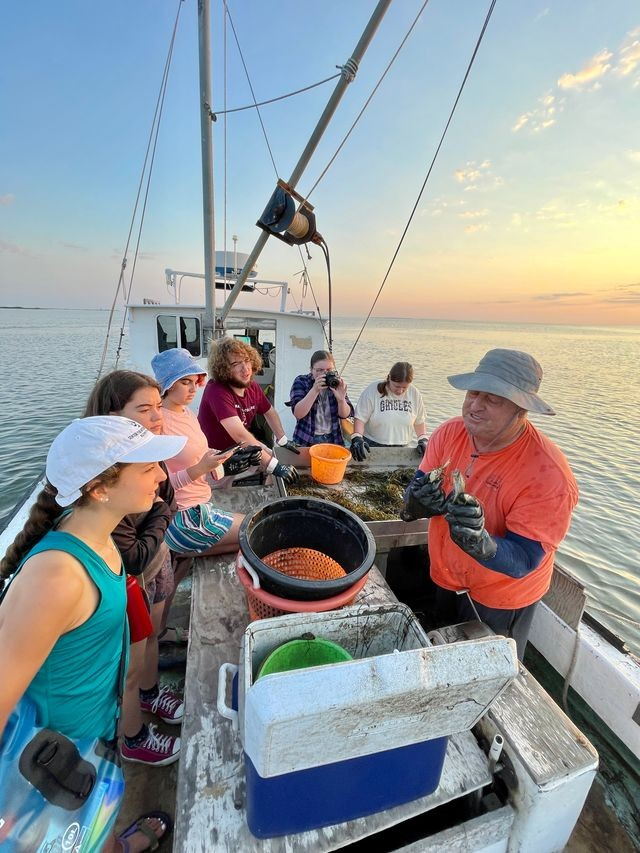Smith Island: The Most Beautiful Place You’ve Never Been
By Kate Livie
Just off the southwestern edge of Maryland’s Eastern Shore, broken shards of an ancient archipelago tumble down the main stem of the Chesapeake Bay. These scattered islands—Hoopers, Bloodworth, Holland, Smith, Tangier—have been waypoints and safe harbors since the days of the Chesapeake’s first people. Generations of pirates and colonists, watermen and farmers washed up on their shores. They created close-knit communities whose traditions, faith, and dialects were isolated and intensified by the great moat of the Bay. Island livelihoods were caught in the rich waters offshore, seasonal harvests of crabs, oysters, shad, waterfowl, and terrapin formed the living backbone of the economy.
Today, the tides are turning for many of the Chesapeake’s islands. Island villages on Hoopers and Deal have withered, their young generations steadily moving off-island for education and careers. Some, such as Holland, have washed away completely, their island stories and gravestones submerged under the very Bay that once sustained them.
But a few vibrant jewels remain, still supported by crabs and oysters. Smith Island is one of them, a resilient outlier resisting time and transformation. Located about 15 miles off Crisfield, Smith is four miles long with three towns, Ewell, Tylerton, and Rhodes Point. It is also the last inhabited island in Maryland not connected to land by a bridge. Woven through Smith’s maritime communities and way of life you find a vibrant and timeless celebration of the Chesapeake Bay.
Though Smith Island was once the kind of place only unlocked by word of mouth, today’s Smith Island is more inviting and accessible than ever. Thanks to some new tourism ventures spearheaded by enterprising Smith Islanders, anyone with an adventurous spirit can explore one of the last, great islands of the Chesapeake—a water world of marsh and sky ruled by elegant workboats and the watermen who guide them.
Island Immersion
The closest most people get to Smith Island is a big slice of its ten-decker cake or a softshell crab sandwich bristling with legs. But Everett Landon and his wife Carole Ann hope to change all that. As the founders and guides at Experience Smith Island, the native islanders are ambassadors to Smith’s landscapes, traditions, and communities. They’re also the ultimate insiders—they know everyone and everywhere on the island, and everyone knows them. With their programs, they unlock a side of island life most tourists never see.
It’s a life that, until recently, the Landons didn’t realize was all that unusual. Growing up on Smith Island, they were surrounded by friends and family whose lineages went back on Smith for centuries. Talking to them is a bit like idly scrolling through a family tree on Ancestry.com—there are Corbins and Bradshaws and Parks connected through the past like a paper chain, tracing one generation after another working the water back, back, back. All that history made life on Smith ordinary—they thought nothing of taking the school ferry back and forth across Tangier Sound on a 30-mile round trip for high school, for example.
“I liked the freedom that I had,” Everett says. “It seemed like it was us islanders, and then the rest of the world out there somewhere—the mainland and everything else. We had no law enforcement. Only parents and other adults that would tell parents when they saw children getting into things they shouldn’t. My mom would always find out what I was doing. When I would get into trouble I would always ask, ‘Who told you?’ And she would always say, ‘A little bird.’”
The community connectedness was something that Carole Ann remembers too. “I loved that my family lived in such close proximity to each other. My dad would cut up watermelon in the late evenings of summer, out in the crab shanty. All of my grown siblings and their families would come down to have some after a hard day’s work. We also got together as a family, every Sunday afternoon after church, to have coffee and Smith Island cake.”
Everett and Carole Ann went on to marry and raise children on the island, and Everett worked the water and as the island’s pastor, taking a boat to preach at each town’s Methodist church on Sundays. (Fittingly, Everett is a direct descendant of Joshua Thomas, the famous Methodist “Parson of the Island” who traveled through the islands on his log canoe, The Methodist.)
But a recent heritage tourism certification course through Maryland Tourism was eye-opening, and for the Landons, life-changing. The couple realized that so many elements of their Smith Island lives—the crab shanties, the cakes, the storytelling, the community connection—were things that island visitors wanted to experience, too. So the Landons created a business, Experience Smith Island, to do just that. Onboard their deadrise, Circuit Rider, the Landons share the verdant marshes, island culture and local traditions with their participants each year, May through September.
“Most of the time, when I take a group to the island, they say, ‘I had no idea it was like this,’” Everett says. “I really enjoy helping people to understand what the island is. How we live. The history we have. The beauty. There is so much that the island offers and people just don’t understand it until they see it.”
The Landons have put together a package of different programs directly inspired by growing up on Smith. On their cake-baking demonstration, for example, Everett’s mother puts you to work in her own kitchen, portioning out the yellow cake batter into precise, thin layers.
You can visit Everett’s father in his crab shanty and help him fish up the tender softshells in the shedding tanks, or hop on a boat and head out to see the pelican rookeries where the wild-looking hatchlings are a reminder that somewhere in every bird’s DNA is a tiny dinosaur. If they don’t provide a specific program, they’ll connect you with someone on-island who can. And importantly, they help you navigate—literally—the planning and process necessary to get to Smith from Crisfield’s dock.
Everett explains. “‘I often say, the planets have to align to get to the island. The weather, ferry boat schedules, and time of year all play a factor in when—or if—you get on or off the island. You need someone who understands the logistics. We know the people, the places, the captains, and everything else that is needed to make for a great visit. From the ferry schedule to arranging an off-hours visit to one of the local shops, we can smooth the way for our visitors.”
To arrange a program, visit Experience Smith Island or visit their Facebook page.
Scraping By
Mark Kitching has hospitality in his blood. The grandson of the famous cook and hostess Frances Kitching, whose boarding house and cookbook made Smith Island’s warm welcome and delicious fare a household name, Kitching has his grandmother’s gift of gab and flair for making a person feel right at home. As the Smith Islanders would say, Kitching has been a waterman “all his life,” oystering in the winter and scraping for soft shells in the summer. Like the Landons, Kitching also recently wrapped up a course in heritage tourism through Maryland Tourism, and it got him thinking: maybe other people would be interested in seeing what a day in the life of a Smith Island crab scraper is like.
Crab scraping is the ultimate adaptation to Smith Island’s unique environment. It capitalizes on the lush underwater grass beds that thrive around the island’s vast marshes in summertime. Crabs retreat into the grasses for cover, to feed, mate and shed their shells as they molt and grow in size. The islanders developed triangular metal and net scrapes to be drawn through the beds like delicate lawn mowers, pulled by the thin, needly work boats favored by the island’s boatbuilders.
Since the turn of the century, Kitching estimates, watermen have dragged scrapes like his working the waters around the island in search of softshell crabs. After the scrapes are pulled up and the nets are emptied, they manually cull through each batch of topped eelgrass and widgeon grass. The thick grasses teem with aquatic creatures—seahorses, mud crabs, naked gobies, terrapin.
All are gently separated and tossed back into the water in search of the real prize, softshell or molting crabs. Once the waterman calls it a day, they take their catch back to their crab shanties, where shedding tanks with circulating water hold the crabs until they’re boxed up and shipped off to gastronomes around the world. Today, Kitching estimates, only six active crab scrapers are left on the island.
Onboard Kitching’s workboat, the Rebekah, visitors are invited to try their hand at scraping, and along with it, get a peek at the Chesapeake vistas and wildlife found within the island’s marshes. On an unforgettable July morning last summer, I was lucky enough to join Kitching with five Washington College students as he left Ewell’s harbor for his favorite scraping spot.
We were treated to a glorious sunrise, and settled into a protected cove where Kitching dropped his scrape. He’s a patient teacher, and he explained each step of the process to the students as he worked—the operation of the scrape, the site he had chosen. When the bulging scrape was pulled up on the winch and onto the culling board, he invited the students to plunge their hands deep into the grass, dislodging an aquarium’s worth of small Bay creatures including a terrapin the size of a dinner plate. We found softshells and crabs that were showing every sign of molting soon. The Bay’s animals trickled over the side of the boat, all legs and fins working overtime to reach the warm, brackish water.
As we worked, Kitching was talking—about his childhood on the island, and the ways the island has changed since. There have been many more mainlanders buying houses and property on the island in response to the booming real estate market since the pandemic. The newcomers aren’t unwelcome, Kitching explains, but they do represent a sea change in the island’s community.
Once we got back to the dock, Kitching had a few bushels of hardshell crabs and some coolers of softshells to add to his shedding tanks. The students and I left with a deep sense of gratitude, knowing that we’ve experienced something beautiful and so increasingly rare, a day in the life of a Smith Island waterman.
To arrange a crab scraping experience visit the Facebook page for Smith Island Eco Tours and Charters.
Know If You Go
Getting There
Three passenger ferries operate year-round and make at least one round trip daily from the town dock in Crisfield to Smith Island. The boat schedule varies with season and the weather, and round-trip service from the mainland is available from late spring through early fall. A second afternoon boat from the Island to Crisfield is usually available during warm weather months. All passengers are strongly advised to call in advance to confirm schedules and round-trip service.
Smith Island Cruises
Memorial Day Weekend – October
Departs Somers Cove Marina 12:30 p.m.
410-425-2771
smithislandcruises.com
Island Belle—Passenger Ferry, Freight and U.S. Mail
Year Round
Departs Crisfield City Dock 12:30 p.m.
410-425-2422
Captain Jason I—Passenger Ferry and Freight
Year Round
Departs Crisfield City Dock 12:30 p.m.
410-425-5931
Meals
There are several restaurants on the island, open for set hours. Note: Tylerton is only accessible by water, so to enjoy a meal there, you’ll need boat access. There is no alcohol for sale on the island, so visitors wanting to imbibe should plan to bring their own.
Bayside Inn—also offer golf cart and bicycle rentals
4065 Smith Island Road
Ewell, MD 21824
Harborside Deli—open daily, also stocks some limited staples
Whitelock Road
Ewell, MD 21824
410-425-2525
Smith Island Bakery— Smith Island cake and local handmade gifts
20926 Caleb Jones Road
Ewell, MD 21824
Phone: 410-425-2018
Open daily from 9 am to 4 pm, 7 days a week
Drum Point Market—includes a gift shop
21162 Center Street
Tylerton, MD 21866
410-425-2108
Lodging
There are several bed and breakfasts on the island, as well as a thriving market for Airbnbs. Note: If you book an Airbnb, plan to bring your groceries from the mainland. Limited staples are available at the local market for a only few hours each day.
Smith Island Inn B&B (Ewell)—3 bedrooms, a sitting room, and a fully equipped kitchen on one of Ewell’s tidy streets. Bikes and kayak rentals available too.
Address: 20947 Caleb Jones Rd, Ewell, MD 21824
Susan’s on Smith Bed and Breakfast (Ewell)—2 bedrooms and a large front porch overlooking Ewell harbor.
Address: 20759 Caleb Jones Road, Ewell, Maryland 21824
Island Time B&B (Rhodes Point)—whole house rental with sweeping water views and double, wrap-around front porches.
Address: 3376 Smith Island Road, Ewell, MD 21824
